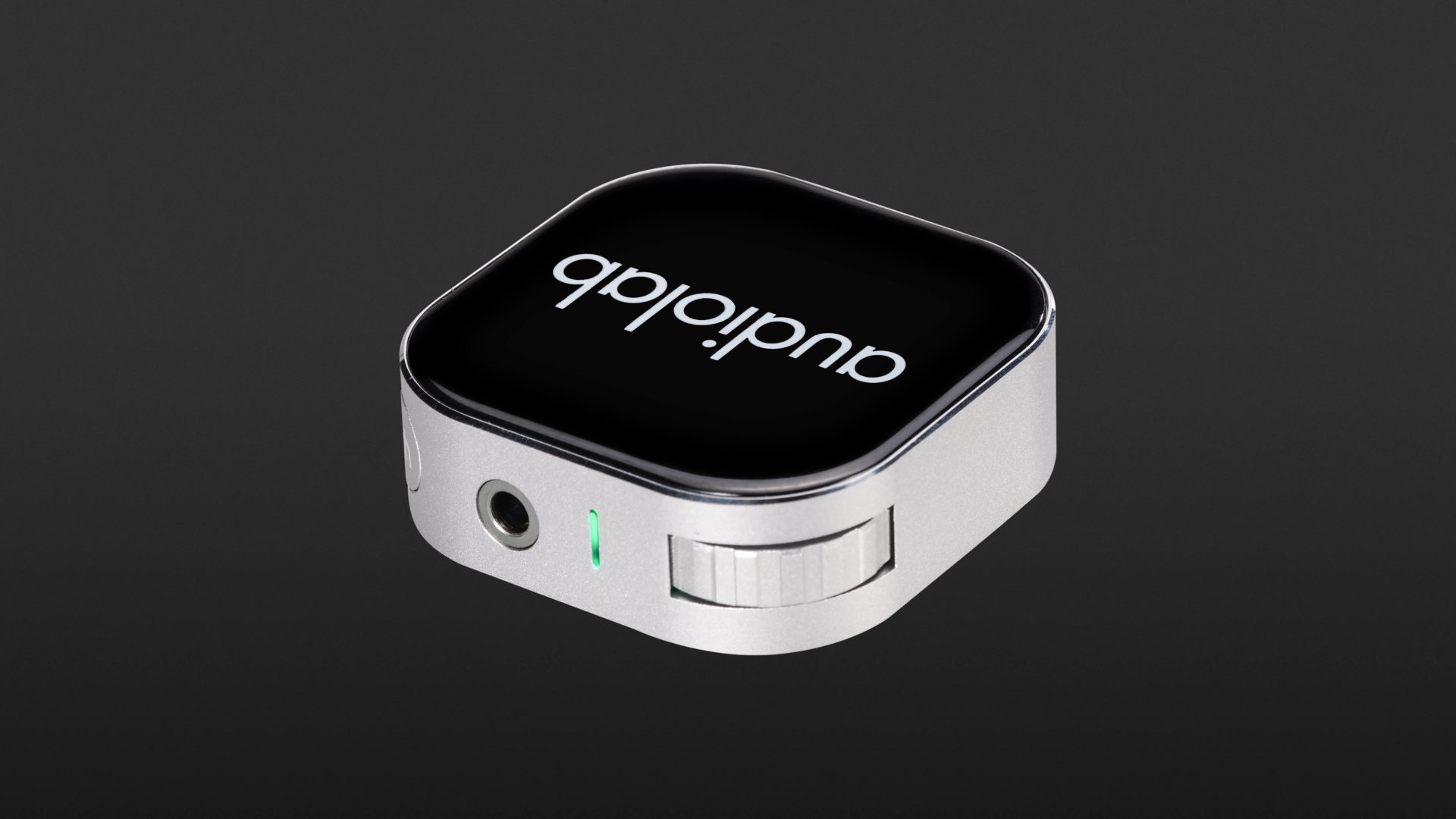Without a doubt, the Audiolab M-DAC Nano is a useful and sonically convincing accessory. It is, therefore, a useful accessory and sound enhancer in several situations, especially if you want to use your favourite cable headphones with a smartphone that lacks analogue output as the device performs this task quite impressively. In practice, it delivers good results as a converter and headphone amplifier conversion, but the lack of the highest quality codecs is a clear disadvantage – because, after all, at just under 200 Euros, the M-DAC Nano is more expensive than many headphones.
The transmission of audio signals via Bluetooth is undoubtedly practical but, at the same time, there are plenty of headphones and other speakers that work wired. The M-DAC Nano is designed to bridge the gap between these devices as well as enhance the sound.
First of all, this battery-powered device draws attention to itself with extremely compact dimensions (4.4 x 4.4 cm) and feather-light weight of 28 grams, making it ideal for mobile use. The black plastic case looks suitable for the everyday but is not explicitly high quality. But it’s more about the inner values: on the receiver side, the M-DAC Nano works with Bluetooth 4.2 and higher resolution codecs aptX and AAC. In addition, there is a headphone amplifier with a 3.5 mm jack output that is capable of handling high-impedance headphones (8 to 300 ohms). Finally, the built-in Cirrus Logic DA-converter is intended to ensure optimised sound enjoyment and it supports resolutions of up to 32 bits and 384 kHz. At first glance, this does not really match the 16-bit transmission path of Bluetooth, however, the electronics offer the possibility of scaling up the signal to the maximum resolution at the touch of a button.
Who is it for?
There are several useful applications for the M-DAC Nano. Firstly, it is suitable for using wired headphones with smartphones without a jack output – we’re looking at you iPhone – meaning that you don’t have to go without your usual high-quality headphones. Due to its dimensions, this device fits into any pocket and can also be worn on a belt using the clip that is included. Annoying adapters, such as those that use USB-C or Lightning, are no longer necessary.
A strong argument for purchasing one of these is the built-in D/A converter, which is simply more sophisticated than its counterparts in a smartphone and is supposed to improve sound through scaling up the signal, as mentioned above.
The M-DAC Nano can also be used to stream audio from a smartphone, tablet or computer to a hi-fi playback system. Lastly, such a system can also help older sound systems in cars to provide a high-quality Bluetooth soundtrack.
In practice
The M-DAC Nano operates with an integrated battery. This provides almost five hours playing time when using the 32-bit option. The manufacturer speaks of a runtime of up to eight hours, but this is without the signal upscaling. The device can be charged via USB in two hours using the included leather-clad inductive charging cradle (playback is still possible during charge). A direct connection for USB is not provided, which is a shame as this would have been quite useful for stationary use.
The device is switched on with a single switch, which is also used for quick and easy pairing and in playback mode for switching between conventional 16-bit resolution and scaling up – all visualised by a multicoloured LED. The second control element is the stepped volume control with push function. From here, you can also start or stop playback and jump between titles with multiple clicks. It is also possible to manage phone calls and call up your smartphone voice assistant. Other features include automatic pause of playback when the jack is pulled out and automatic switch-off after 10 minutes of inactivity. The presence of the aptX LL codec is particularly noteworthy, its fast mode of operation making it ideal for sound output from video. This puts an end to the annoying offset between picture and sound that you sometimes get with other solutions of this type. The range of the wireless link is sufficient for all of these applications.
Sound
I’m a bit conflicted about the sound quality of the M-DAC Nano. The device advertises itself as a high-quality converter, but at the same time, it does without the most important audiophile Bluetooth codecs aptX HD and LDAC. This means that headphones inevitably receive a reduced data signal. Doubtless, an existing analogue output from a smartphone will give better results for playing uncompressed sources. In fact, if you have such an output, then I would not encourage you to buy this product, but I’m not going to stick my neck out at this point.
As a Bluetooth headphone amplifier, the M-DAC Nano provides a low-noise output signal that provides sufficient level reserves even for quiet headphones such as the AKG K702.
The effects of switching on the scaling up to 32 Bit/384 Kilohertz are clearly audible. The sound gain is expressed by improved transparency, detail and panorama resolution as well as added value in the bass. The overall sound image moves noticeably forward. Objective evaluation is made more difficult, though, because switching causes a small jump in the level, and this usually makes it sound better anyway.
Technical specifications
- TypeAmplifier
- Impedance8 - 300 ohms
- Weight without cable28 g
Special features
- BT codecs: aptX, aptX LL, AAC, SBC
- BT version: 4.2











































